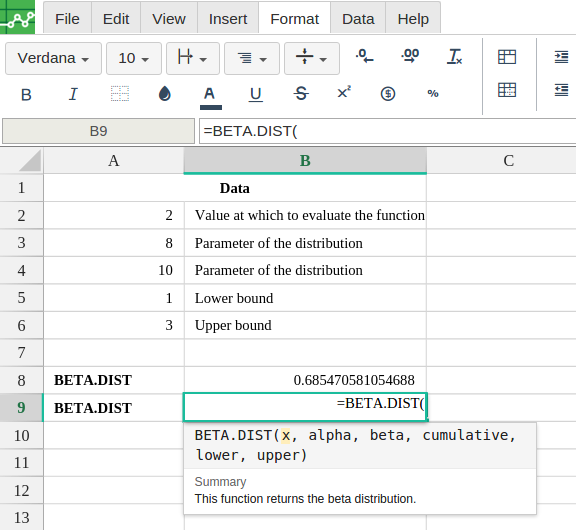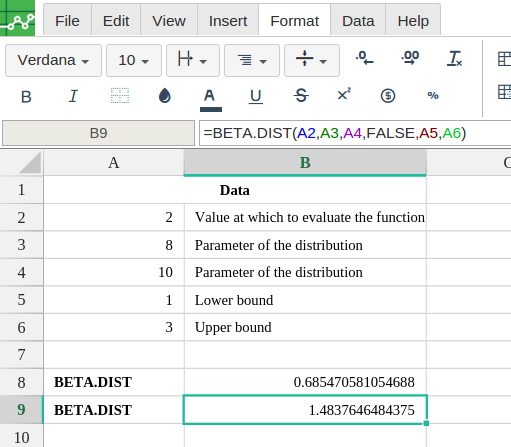BETA.DIST
Definition
Returns the beta distribution.
The beta distribution is commonly used to study variation in the percentage of something across samples, such as the fraction of the day people spend watching television.
Sample Usage
Syntax
BETA.DIST(x,alpha,beta,cumulative,[A],[B])
The BETA.DIST function syntax has the following arguments:
X Required. The value between A and B at which to evaluate the function
Alpha Required. A parameter of the distribution.
Beta Required. A parameter of the distribution.
Cumulative Required. A logical value that determines the form of the function. If cumulative is TRUE, BETA.DIST returns the cumulative distribution function; if FALSE, it returns the probability density function.
A Optional. A lower bound to the interval of x.
B Optional. An upper bound to the interval of x.
Remarks
If any argument is nonnumeric, BETA.DIST returns the #VALUE! error value.
If alpha ≤ 0 or beta ≤ 0, BETA.DIST returns the #NUM! error value.
If x < A, x > B, or A = B, BETA.DIST returns the #NUM! error value.
If you omit values for A and B, BETA.DIST uses the standard cumulative beta distribution, so that A = 0 and B = 1
In order to use the BETA.DIST formula, start with your edited Excellentable


A
|
B
|
|
|---|---|---|
1
|
||
2
|
||
3
|
||
4
|
||
5
|
||
6
|
||
7
|
||
8
|
||
9
|
